Walls of Ávila
- Address: www.avilaturismo.com
- Tags:
 What to see Ávila,
Ávila,
Spain
What to see Ávila,
Ávila,
Spain
- Telephone: 920 35 00 00
- Website: www.avilaturismo.com/es/
The Magic Walls of Ávila
Today we are changing location and directing ourselves towards the small town of Ávila. Ávila is a small province capital with 50, 000 inhabitants who are all lucky enough to live in a place with such rich historical heritage. Ávila was a stop on my very first trip to Portuguese territory and I had the opportunity to discover the city's walls, the Ávila Cathedral and the San Pedro Church.
On this occasion, we will start at the walls. They have been named as a UNESCO World Heritage Site and as an obligatory visit on your next trip to Ávila.

How to get here?
From Madrid, the best form of arrival to Ávila is by regional train. The commuter train leaves from Aranjuez and from there it is transferred to Ávila. Although it is sold as regional, there are actually two commuter trains, one that leaves you in Aranjuez, going through the suburbs of Madrid and the other that leaves you in Ávila, going through the different towns in the province of Ávila.
In terms of the walls, the best way to get there is walking. Ávila is not too large of a city, so therefore just asking someone will lead you to the historical town cente. The walls can help you identify the location.
A little bit of history...
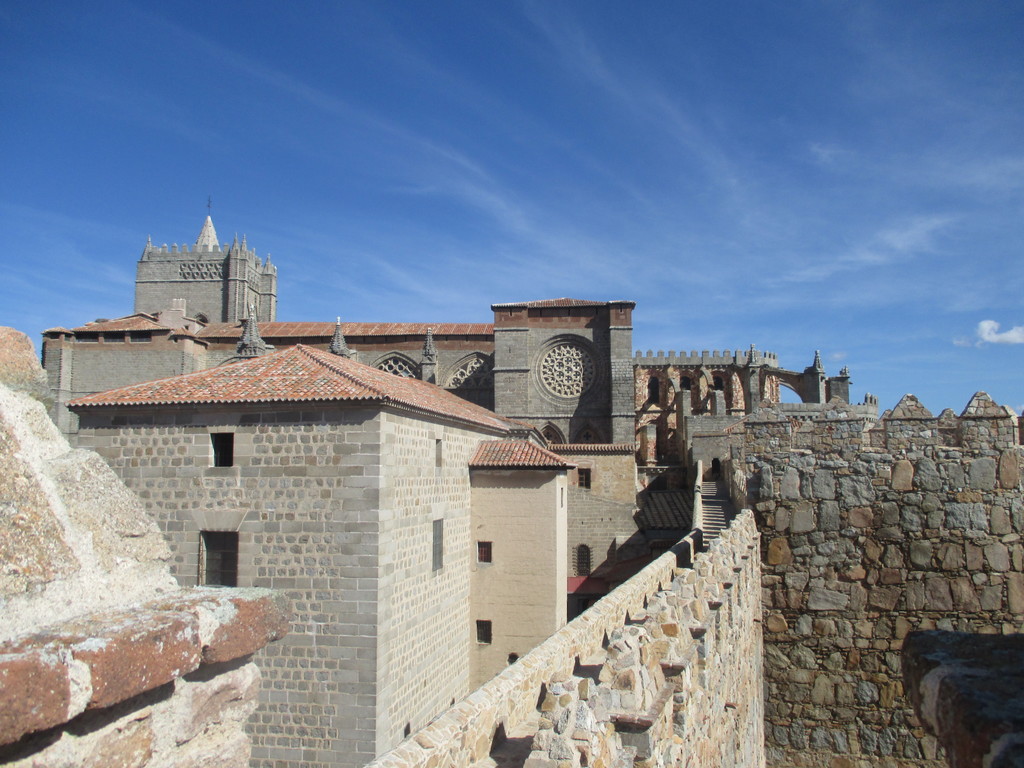
In the middle of the Reconquista age in Spain and Portugal, the Christian Kings advanced towards the South. As they were on the frontiers of the Kingdom of Castile, the cities of Salamanca, León, and Ávila had walls created to secure them. The walls of Ávila were constructed during the 11th century, although some more recent theories have suggested that they could not have been built so quickly due to the fact that surely they were based on the ancient Roman city centre where, for example, the Portuguese city of Viseu (which I will talk about soon) survives.
Ávila was not particularly distinguished from other cities with similar walls, but this changed in the 19th century when many cities destroyed their walls in favour of expansion and development. For example, in Valencia and Gandía in the Autonomous Community of Valencia, only fragments of these walls remain.
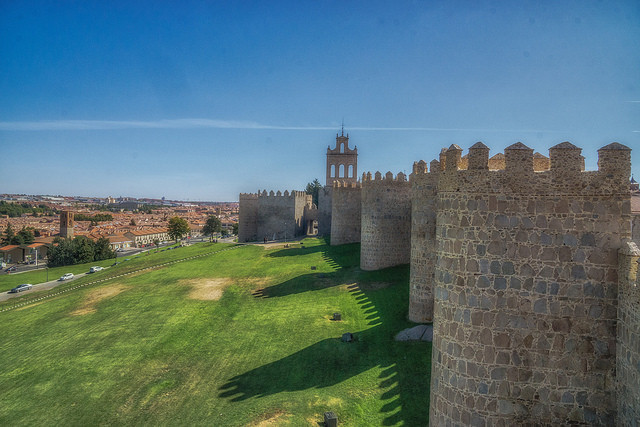
However, the city of Ávila was different. Ávila was not a city that had so much economic strength and the walls were constructed on top of a slightly elevated area which meant that it affected communications, and most importantly, it did not have the money to destroy its walls. Despite people betting on their removal at the end of the 19th century, the walls were named as a National Monument in 1884 and they have been protected ever since. Later, in 1892, Ávila was named a Historical-Artistic Site which amplified it to other places in Ávila and triggering the status of UNESCO World Heritage Site, which was given to Ávila in 1985.
The Walls
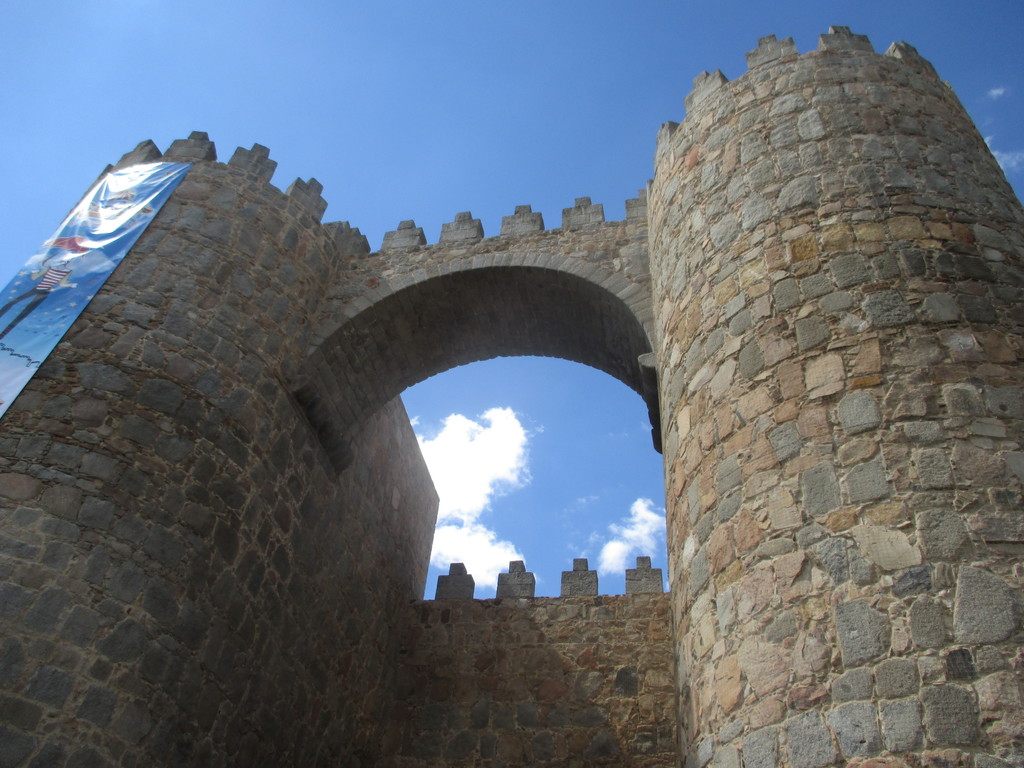
There are four places to begin, divided into two itineraries. One slightly shorter of about 226m and another, much longer of 1440m. Let's start with the shorter of the two routes, starting at the Alcázar door in the Adolfo Suárez Plaza, practically in the centre of Ávila. Around here we also have views of the Ávila Cathedral and the San Pedro Church.
They will give us a video guide that must be returned later, but of course it is in Spanish and other languages. It is curious because, when you are walking with the device through signals or certain technology, it activates the device and it begins to talk about what we can see in front of us. This part is small for two reasons, one because a piece of wall can not be left because it passes behind the cathedral, and also because the other side is still unrestored. Unfortunately, there is a small section that has not yet been restored but even so, you can get tired walking along the entire wall. This part shows us the views from the Alcázar door of the Plaza de Santa Teresa de Ávila, a place where a market is held and where we can see the Church of San Pedro.
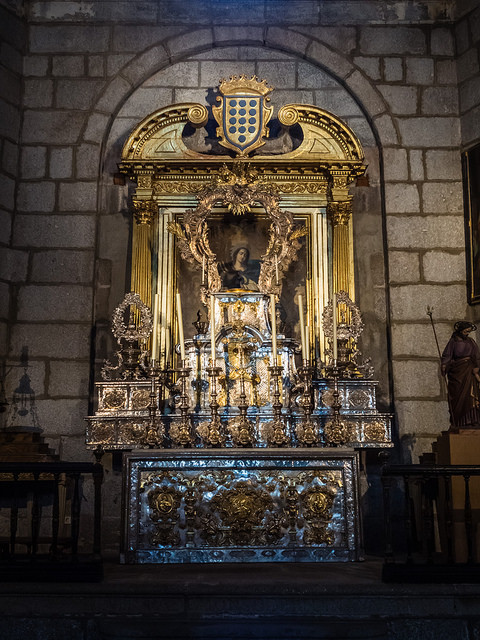
After seeing this little section of wall, let's go back to the same place and return to the audio guide. With the same entrance we can visit the rest of the wall. The larger piece has three entrances, one through the Casa de las Carnicerías on San Segundo street, another through the Adaja door on Marqués de Santo Domingo street, and the last in the Carmen Arch in the Plaza de la Concepción Arenal.
I entered through the Casa de las Carnicerías and then I went back again because I wanted to visit the Ávila Cathedral, but the most normal thing to do would be start at the Casa de las Carnicerías and then follow the wall towards the end where you will find it totally restored. The place also has tourist information, we can go upstairs and we are in the office. With the entrance, they will give you headphones once more and then we can continue towards the walls.
Firstly, we will see the Ávila Cathedral, we will go into more depth talking about it in another article, but it is very strange to see the cathedral next to the walls and the beautiful Cimorro, a defensive element of the cathedral.
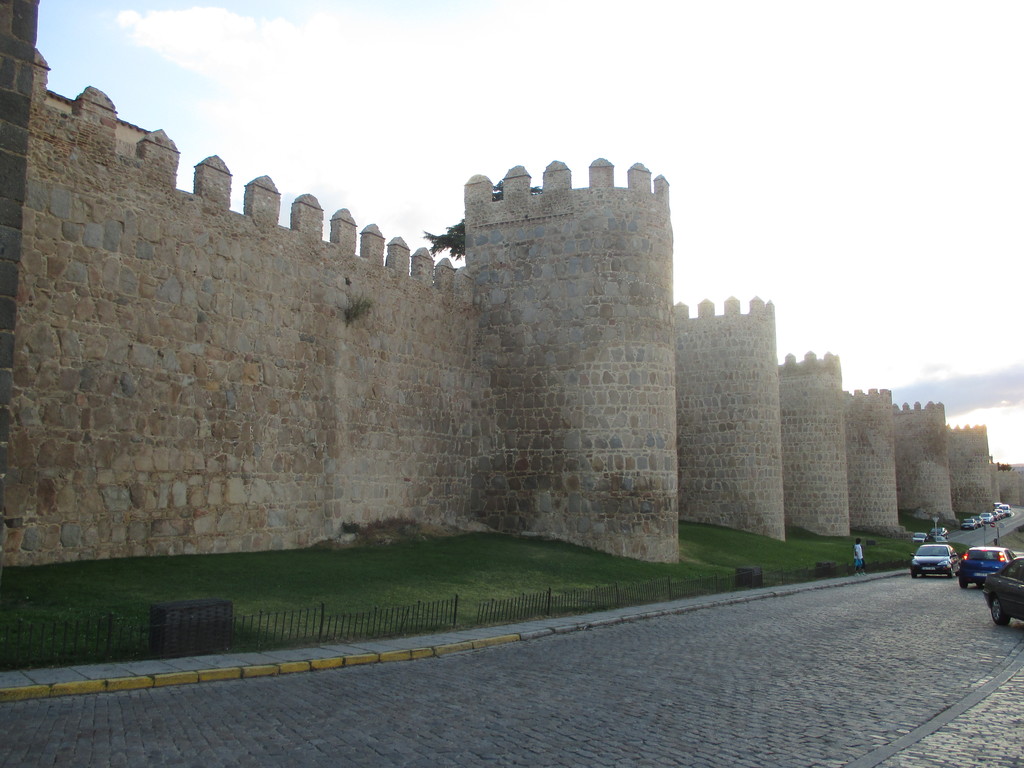
Continuing on, we will pass beyond the San Vicente door, the place where there are the most beautiful views of the San Vicente Basilica which I have not had the opportunity to be able to visit, past the outside area. We will pass close to various noble palaces, specifically those of Sofraga, Bracamonte, Verdugo and Águila, you can see a small courtyard of each of these. The reason that each of these living areas are here is quite obvious, seeing as all of the best houses were located within the city walls.
After the Carnicerías section, we will talk about the Carmen section. This bit is strange as we will pass by various inhabited houses, partly covered so that we cannot see inside the actual houses. This northern area was historically the porest area of the city, the views show us three small Roman churches as those of San Martín, San Andrés and de Santa María de la Cabeza. A bit further on, we can see the Monastery de la Encarnación where Santa Teresa de Ávila was formed, a monastery from the 16th century with a reformed church from the 18th century.
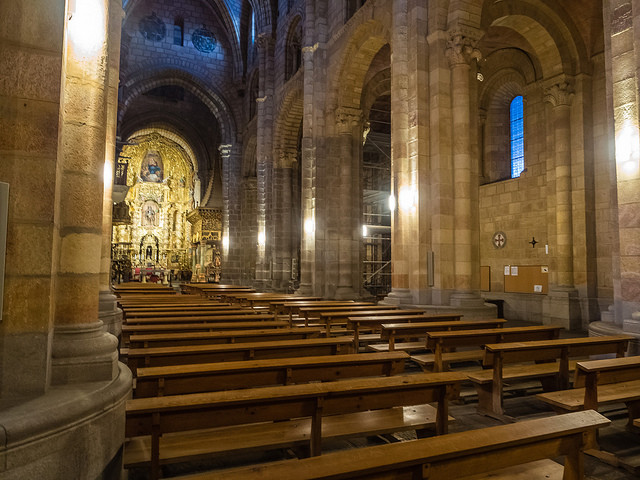
The last section we come to will be the Adaja bridge. From this section we can see the modern Palace of Congress, a building that will be as big as it is but it's a little bad to see the walls and then the white of the Palace, maybe some material more like the rocks on the wall would have been better. Nevertheless, it can be a goof reason to travel to Ávila, if there is a congress or interesting event. The building was constructed in 2009 and designed by the architect Francisco Mangado, where it can hold around 1, 400 people inside it.
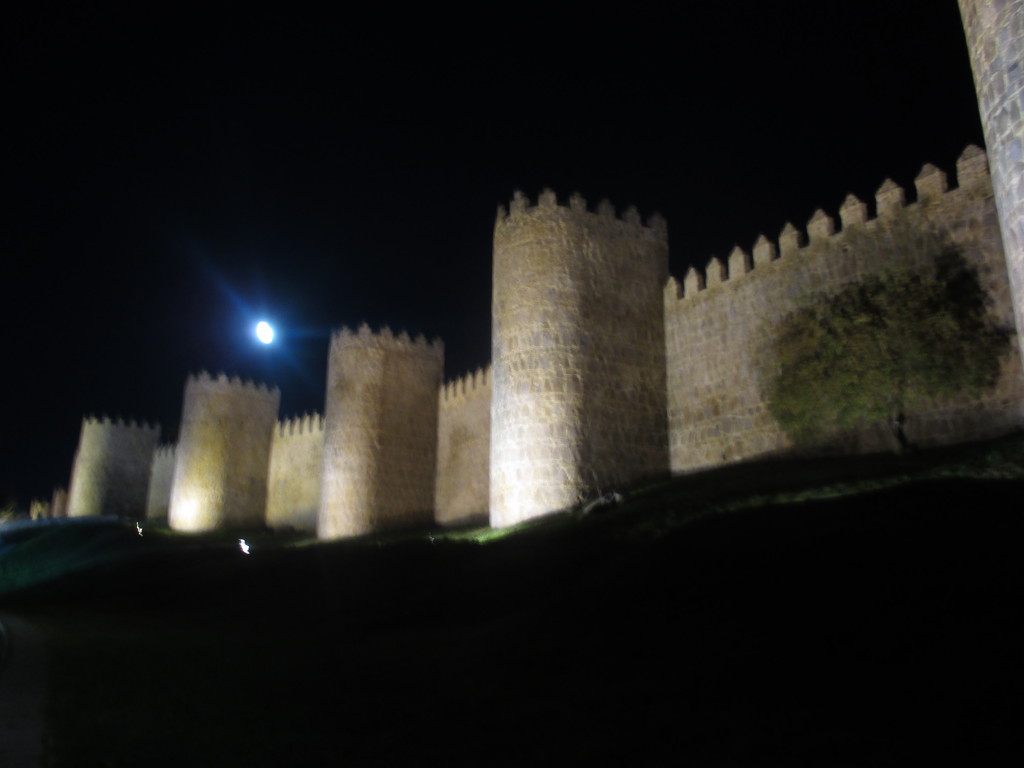
Almost at the end of the wall we will be able to see the small Adaja river and its bridge, a good option is to go down to this part of the wall and around the river. By the views of the river, you can see a more modernised city, and although I could be wrong, I'm guessing that Ávila has grown quite a lot through this area over the last couple of years. The Adaja Bridge that gives its name to this section seems like the most beautiful of all of the other, more recent ones as it doesn't have any defensive characteristics. Lastly, I will mention the beautiful Castile fields that you can see from almost any part of the wall.
Lastly, with the buildings you can see on the inside of the wall, we can see the beautiful Historical Provincial Archive that used to be a parish church, a convent and a jail. You can also see the small San Estebán hermitage.
We have finished all of the accessible parts of the wall, I would also recommend you to visit the piece that remains on the inside of the wall, in the historical centre, or on the outside of the wall - they are both beautiful views. Lastly, I would recommend that if you were to stay the night, you should take advantage of going on a small walk, as the lights from the walls give a precious image of the Ávilan night.
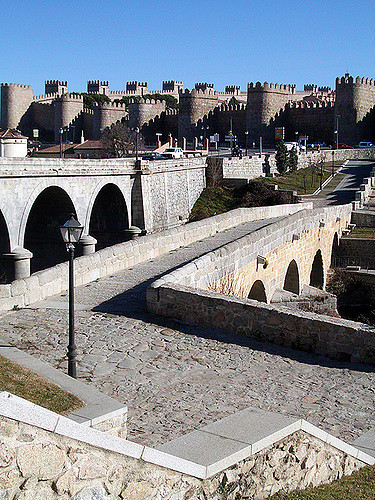
In terms of the opening hours, it is open Monday to Sunday except particular days like national holidays. The winter opening hours are from 10am to 6pm, while in summer they open until 8pm.
The entrance fee is 5 euros, but if you are a student then it is only 3. 50 euros, a reasonable price. If you have the luck of being there on Mondays, it is free between 2pm and 4pm.
In conclusion, why visit the walls of Ávila? The walls are beautiful, they are in a perfect state of conservation, they are the best viewpoints in the city, the headphones give you all the information you need... Whether you like it or not, (although its better if you like it) for someone who likes history or medieval heritage or simply loves to go to castles, convents and palaces, they should visit the walls of Avila, undoubtedly.

Photo gallery
Content available in other languages
- Español: Mágicas las murallas de Ávila
Rate and comment about this place!
Do you know Walls of Ávila? Share your opinion about this place.

























